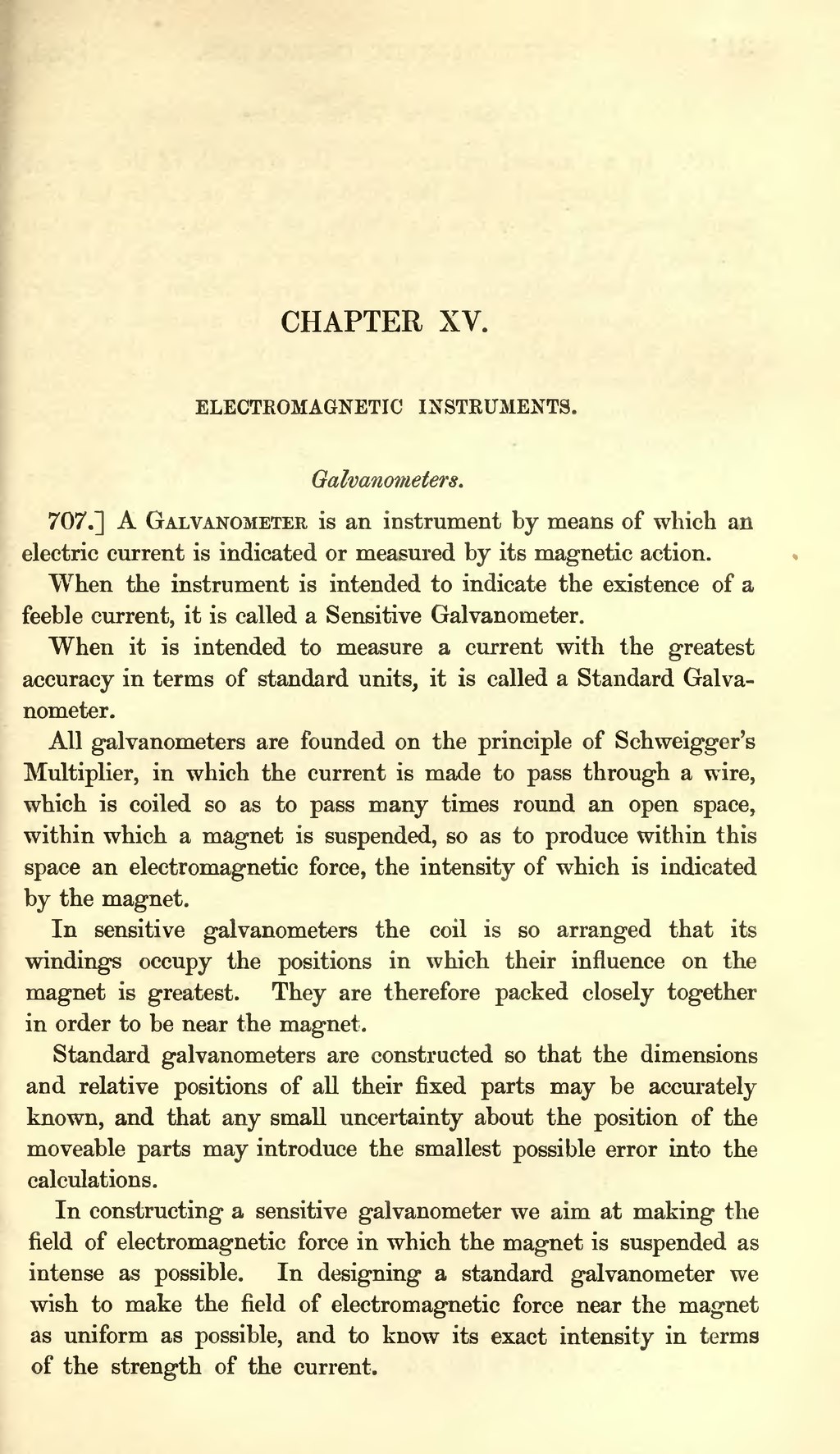CHAPTER XV.
ELECTROMAGNETIC INSTRUMENTS.
Galvanometers.
707.] A Galvanometer is an instrument by means of which an electric current is indicated or measured by its magnetic action.
When the instrument is intended to indicate the existence of a feeble current, it is called a Sensitive Galvanometer.
When it is intended to measure a current with the greatest accuracy in terms of standard units, it is called a Standard Galvanometer.
All galvanometers are founded on the principle of Schweigger's Multiplier, in which the current is made to pass through a wire, which is coiled so as to pass many times round an open space, within which a magnet is suspended, so as to produce within this space an electromagnetic force, the intensity of which is indicated by the magnet.
In sensitive galvanometers the coil is so arranged that its windings occupy the positions in which their influence on the magnet is greatest. They are therefore packed closely together in order to be near the magnet.
Standard galvanometers are constructed so that the dimensions and relative positions of all their fixed parts may be accurately known, and that any small uncertainty about the position of the moveable parts may introduce the smallest possible error into the calculations.
In constructing a sensitive galvanometer we aim at making the field of electromagnetic force in which the magnet is suspended as intense as possible. In designing a standard galvanometer we wish to make the field of electromagnetic force near the magnet as uniform as possible, and to know its exact intensity in terms of the strength of the current.
